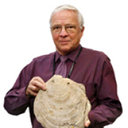The role of the CCR1 receptor in the inflammatory response to tobacco smoke in a mouse model.
Anahtar kelimeler
Öz
OBJECTIVE
The aim was to create pathological changes in mice relevant to human smoke exposure that can be used to further understand the mechanisms and pathology of smoke-induced inflammatory disease.
METHODS
Mice were exposed to tobacco smoke or lipopolysaccharide (LPS) to generate an inflammatory infiltrate within the lungs.
RESULTS
Tobacco smoke exposure over a 4 day period led to neutrophilia in the lungs of BALB/c mice. Within the inflammatory exudates, significant changes were also seen in protein levels of IL-1B, IL-6, MIP-2, KC (IL-8) and TIMP-1 as measured by ELISA. Further protein changes, as measured via multiplex analysis revealed increased levels of MMP-9, MDC, LIF and MCP-1, amongst other mediators. Major changes in whole lung tissue gene expression patterns were observed. The neutrophilia seen after smoke exposure was steroid-insensitive, relative to doses of steroid needed to reduce LPS-driven neutrophilia in controls. This exposes pathological switches that are changed upon exposure to tobacco smoke, rendering steroids less effective under these conditions. Challenge of chemokine receptor type 1 (CCR1) KO mice in the tobacco smoke model showed that lack of this gene protected the mice from smoke-induced inflammation.
CONCLUSIONS
This suggests the CCR1 receptor has a key role in the pathogenesis of smoke-induced inflammation.


